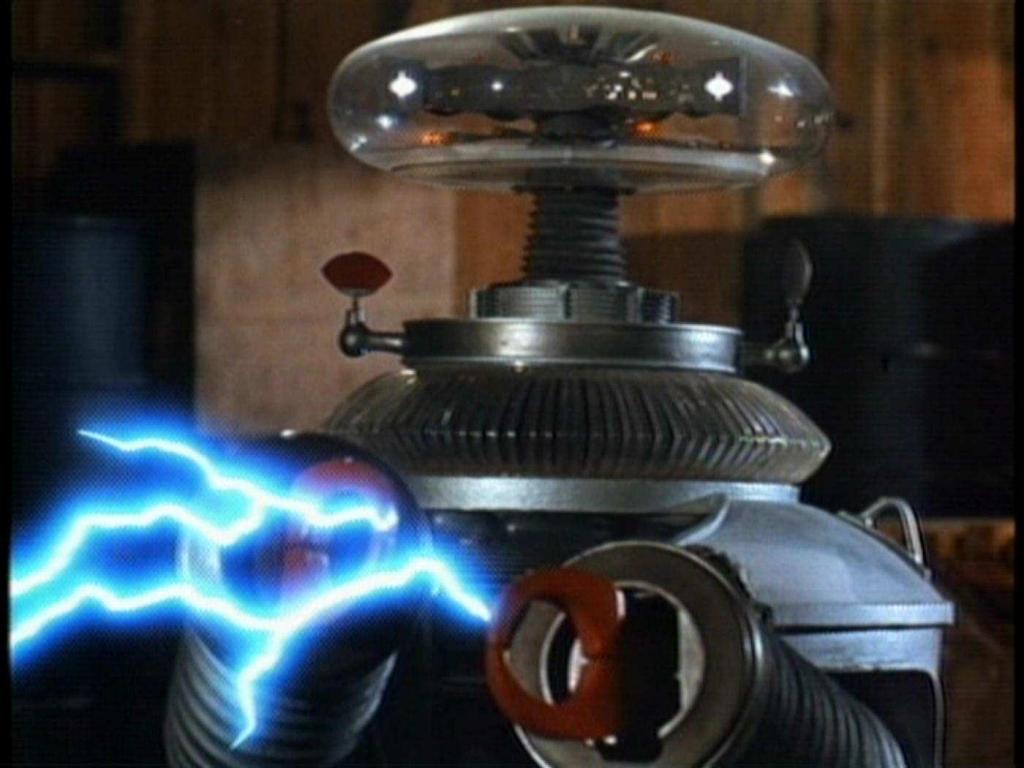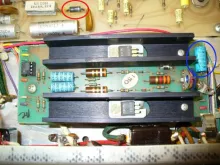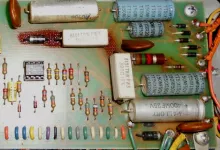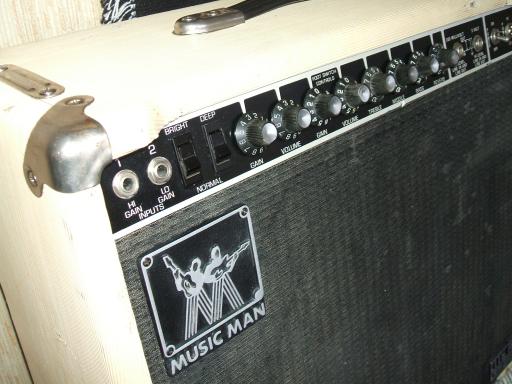HD-150 Reverb- Specs differ from installed component
New to this forum, and I have found it to be a most informative and helpful resource. I have searched over the archives, but could not find a reference to this anomaly. I have a 2/1981 HD-150 Reverb, chassis 2275-150-CAN (canadian model), with only one quad of 6L6GC Mesa Engineering STR 415's have been in there since I've owned it. In addition, 6L6GC are what the tube diagram glued inside the amplifier calls for. It has been the most rugged and reliable piece of equipment that I've ever owned. But after years of heavy use and abuse both personal and professional, my amp started making little noises that sounded like leaking caps to me, but then the fuse blew for the first time ever during a rare high volume honkin' practice session and resulted in a loud hum before fizzling out:). Replacing the fuse resulted in the same hum and one pair of very hot tubes. I consulted this knowledgeable and esteemed forum for the answers, and found that the cause was a bad JE1692 transistor; more on that in a minute. All things considered, time, wear and tear, and heavy use a few years back and now again recently, I figured that I will recap and retube while I have it all apart, since the resources and posters here are so experienced, helpful, and thorough (and besides, who can afford what they want for new amps?). That said, on to the issues at hand. I discovered that one of the pair of Motorola JE1692's (one of which had been replaced previous to my ownership--curiously, they did not replace the pair, only one), had gone south. Further research revealed that the JE1692 was replaced by the 2N6292, so I procured a pair. However, in MM's service bulletin number 7, it states that they considered the 2N6488 a superior replacement to the previously used 2n6292, presumably because it is a more robust unit--15 amps/80 volts, up from the 8 amp/70 volt spec from the 2N6292. So I will upgrade to the 2N6488, but I have two questions at this point. Does this change the tonal aspect/color noticeably at all? And does it require changing the value of one of the caps on the DB-4 board? I ask this because the spec on the DB-4 board from the Ernie Ball archive for C47 is 20uf/25 volts, but I have a 150uf/3 volt there, as did a previous poster, Greg, who had done the cap replacement job on his HD 150 R some ten years back. I came up with the identical list of caps as he did, which was comforting, until I came across the schematic, which is in conflict with itself--they call for the 2N6488 and a 20uf/25v cap at C47 on the main schematic, but further down on that same page, there's a close up of the DB-4 board, which lists JE1692 as the transistors and a 20uf/25v cap at C47 as well, and neither one makes mention of the 150uf/3 volt cap that I have at C47, which wasn't a fluke--Greg had one in his HD-150R too, but I can't find one on the schematic anywhere. Can anyone shed some light on this? Am I missing something obvious? Should I go with the same value cap that was in there, or with the latest spec that MM arrived at after switching to the 2N6488? And finally, Greg, if you are out there, how has your recap held up for the last decade?
Also, I have some heat discoloration on the board under and on D16, a 1N5353 Zener diode, which I suspect has shorted out--it has very dark leads, and its corresponding cement 330K/3W resistor looks to have gotten a bit warm too. Any insight about this and/or other areas of concern would be greatly appreciated.
My thanks in advance.
Pop
Member for
11 years 8 monthsMember for
10 years 8 monthsThanks very much for the
Thanks very much for the confirmation and your time, Mike. Borrowing your pic, that's a 150uf/3v on the far right, circled in blue. That's three I'm sure of, so unless Lars has a compelling reason to do otherwise, that's what I'll go back with. The zener diode that got hot on my board is circled in red, and I suspect that it may have been the root cause of my problems.
Also, export or not, I should still remove the cap from the center lug of the polarity switch to ground, correct?
Again, many thanks.
Member for
11 years 8 monthsDeath cap should go by by.
Death cap should go by by. Make sure it's grounded and use ONE hot lead on the switch and be done with it. Oh wait-crap. I think the exports used a double pole switch. Not sure and don't have a schem here handy as I'm leaving. Dump the cap though. Hot in, hot out.
Member for
11 years 8 monthsMy 2 cents
The value of the bias supply stabilizer capacitor is not all that critical. It makes sense that MM switched to using the 20uF/25V value that they were already using elsewhere to save a few bucks. The main difference between the earlier version of the driver board and the DB-4 is the addition of the two diodes by the transistor bases.
About the CAN-prefix - it's merely a variant of the Domestic type. The switches are the same in the two. The 'death cap' (hum reduction) may be different in the 'CAN' (and JPN) version depending on the individual amp's vintage.
Your amp is due for an overhaul. Replacing the electrolytics (every single stinking one) and most of the zener diodes and a few select power resistors is good practice.
Sincerely,
Lars Verholt
(in Canada)
Member for
10 years 8 monthsThank you for your input,
Thank you for your input, Lars. I didn't think that the cap value was critical since there are two flavors, but I thought I would ask to be on the safe side. As you suggested, I have ordered replacements for every electrolytic cap I could find. I figured that I would replace both zener diodes as a matter of course. I'm aware of inspecting/checking the resistors that are mounted to the tube sockets for heat fatigue and cracking--perhaps you would be kind enough to share the locations of the other power resistors when you have a spare moment?
Ya think this diode shorted? LOL.
Thanks again for your help.
Regards,
Pop
Member for
11 years 8 monthsMember for
10 years 8 monthsYeah, it's pretty ugly, isn't
Yeah, it's pretty ugly, isn't it? To be quite honest, Mike, I haven't pulled it up yet to look underneath as I am waiting on parts and a distraction free day (few and far between around here). I'm a bit apprehensive myself; I suspect that you might be dead-on and I'll have to point to point wire in spots if those traces are toast. Thanks much for checking back, and I'll let you know what I find.
Member for
11 years 8 monthsYeah, wouldn't be the first
Yeah, wouldn't be the first one I've had to jumper wire. It's amazing though how robust those OLD traces were. The new crap, another story. As many as I've done, I've lifted traces on some newer pedals that I was modding because they were so cheap. New amps, they just suck.
Member for
10 years 8 monthsMember for
11 years 8 monthsMember for
10 years 8 monthsNot only will I consider it,
Not only will I consider it, I'll do it. I just ordered those cement resistors today. Anything on or bordering the crispy zone will be replaced. Yeah, I didn't see the other diodes until today, but I'll replace them. Thanks for the advice and good wishes, Mr. Griffin.
Member for
11 years 8 monthsMember for
10 years 8 monthsMember for
10 years 8 monthsWell, I had a few hours today
Well, I had a few hours today, so I jumped in with both feet. As Mike K suspected, the traces under the diode and the wire wound resistor were toast, so I'll be jumper wiring them. I sourced all the parts and supplies, about $125, all told. Most of them are already here....still waiting on some big resistors.
I can't complain. I paid $60 for this head in the mid eighties, and got nearly three decades of great tone out of it. Looking forward to completing the rebuild.
My thanks to everyone for your help and suggestions. I'll update this thread when some progress is made.
Pop





Maybe the export versions
Maybe the export versions were different? Don't know. Maybe Lars can be of help. The only 150 I've had access to has the same components that you have. Here's a shot of the driver board on the one I had open, if that helps. I have larger res pics if you need them. Lars will be the one for this as he's done a lot of export stuff. Mike